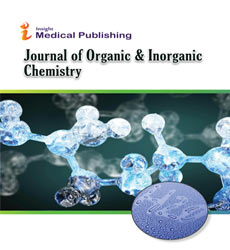Chemiluminescent Analysis and Swirl Combustion of Ammonia-Doped Sludge Pyrolysis Gas
Yuto Isamu
Department of Chemistry, Yokohama National University, Yokohama, Japan
Published Date: 2024-09-23DOI10.36648/2472-1123.10.3.91
Yuto Isamu*
Department of Chemistry, Yokohama National University, Yokohama, Japan
- *Corresponding Author:
- Yuto Isamu
Department of Chemistry, Yokohama National University, Yokohama,
Japan,
E-mail: iasmyu@ynu.jp
Received date: August 23, 2024, Manuscript No. IPJOIC-24-19651; Editor assigned date: August 26, 2024, PreQC No. IPJOIC-24-19651 (PQ); Reviewed date: September 09, 2024, QC No. IPJOIC-24-19651; Revised date: September 16, 2024, Manuscript No. IPJOIC-24-19651 (R); Published date: September 23, 2024, DOI: 10.36648/2472-1123.10.3.91
Citation: Isamu Y (2024) Chemiluminescent Analysis and Swirl Combustion of Ammonia-Doped Sludge Pyrolysis Gas. J Org Inorg Chem Vol.10 No.3: 91.
Description
Slop pyrolysis is a warm decay process led under anaerobic or anoxic circumstances, bringing about the age of combustible gases like Hydrogen (H2), Carbon Monoxide (CO) and Methane (CH4). Discarding these gases prompts huge energy misfortune as well as adds to natural contamination because of CO discharges. As a result, converting pyrolysis gas into usable energy is vital. The utilization of biomass feedstocks by pyrolysis technology is highly effective, reaching utilization rates of more than 90%, maximizing the conversion of biomass into energy products. This innovation really lessens the mass and volume of muck while annihilating pathogenic microorganisms. The resulting sludge coke can be utilized for water and air purification as well as the improvement of agricultural soil properties. Additionally, the pyrolysis process's gases and oils can be used to dry sludge or generate heat for the pyrolysis process itself. At temperatures of 500°C or higher, pyrolysis can change over half of the energy in ooze into pyrolysis gases and condensates, which can be utilized to fuel slime drying or further pyrolysis. Tending to the difficulties related with the burning of medium and low calorific worth gas fills has been a focal point of exploration. Burner combustion stabilizing structures have been the focus of research, as have the fuels' combustion mechanisms, such as flame structure, combustion rates and flow field distributions. For instance, investigated the emission characteristics of microgas turbines and discovered that fuels with medium and low calorific values could reduce CO2 emissions.
Chemical kinetic
Chemical kinetic analyses were used by Blouch's team to investigate the use of mixed fuels containing N2, C3H8 and C2H6 in a premixed combustion chamber. These analyses looked at how fuel composition, pressure and temperature affected lame residence. Smelling salts (NH3) is acquiring consideration as a promising elective fuel because of its spotless and sustainable properties. NH3 has a relatively high energy density and only produces Nitrogen (N2) and water (H2O) upon complete combustion, emitting no CO2. As a result, fuel cells and engines frequently employ NH3. Swirl combustion technology is used in conjunction with the mixed combustion of NH3 and sludge pyrolysis gas in this undertaking. The combustion process is improved by swirling combustion and NH3 contributes to the reduction of carbon emissions. In addition, parts like H2 and CH4 in the ooze pyrolysis gas decidedly impact the burning exhibition of NH3, further developing both ignition effectiveness and ecological manageability. The extensive use of sludge pyrolysis gas and NH3 for mixed combustion can effectively reduce carbon emissions and support the widespread substitution of fossil fuels by maintaining combustion stability. In NH3/H2 and NH3/cracked gas swirl flames, examined the chemiluminescence distribution and structural characteristic properties.
Dynamic fuel mixing
Dynamic fuel mixing, a typical procedure to upgrade NH3 ignition, essentially further develops its fundamental burning qualities and power. However, keeping emissions of pollutants under control is still vital. They found that swirling low improves combustion and reduces CO2 emissions, with six blades producing the lowest NOx emissions. Analyzed syngas ignition cutoff points and toxin emanations in low whirl burners with various twirl degrees, inding that a 45°C swirler gives ideal ignition conditions. According to a study of fuel mixtures containing H2 in burners with swirl numbers ranging from 0 to 0.8 revealed that swirl numbers have a significant impact on lame temperature and NOx emission concentration. In although ammonia-doped fuels have been the subject of extensive research, no chemiluminescencebased studies have specifically examined the combustion properties of ammonia-doped sludge pyrolysis gas. Sludge pyrolysis gases with varying equivalence ratios and ammonia doping ratios (XNH3) are the subject of this investigation, which examines the structure and emission characteristics of ammoniadoped swirling lames. Using staged combustion to achieve lowpollution combustion of mixed fuels, the study also investigates the effects of various swirl structures on combustion stability and NOx emissions.
Open Access Journals
- Aquaculture & Veterinary Science
- Chemistry & Chemical Sciences
- Clinical Sciences
- Engineering
- General Science
- Genetics & Molecular Biology
- Health Care & Nursing
- Immunology & Microbiology
- Materials Science
- Mathematics & Physics
- Medical Sciences
- Neurology & Psychiatry
- Oncology & Cancer Science
- Pharmaceutical Sciences
